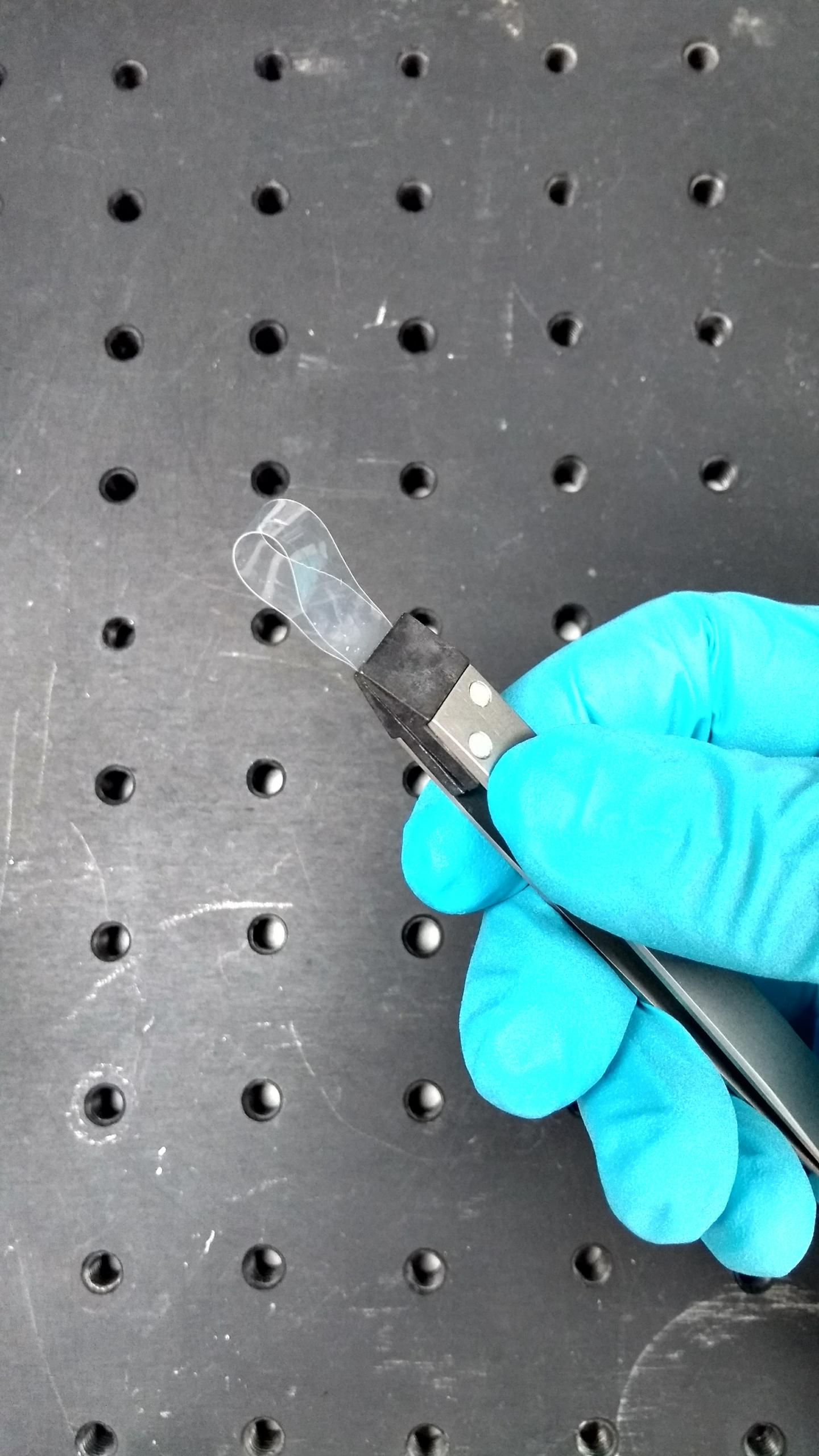
Liquid crystal elastomer with auxetic capabilities, showing its flexibility and high optical quality. Credit: Devesh Mistry
A team from the University of Leeds has developed a synthetic material that becomes thicker at the molecular level as it is stretched, which could be beneficial in a number of applications, including sports equipment, biomedical materials and aerospace.
While examining the capabilities of Liquid Crystal Elastomers (LCE), which are used in mobile phones and television screens, the researchers discovered LCEs have completely new properties when they are linked with polymer chains to form rubbery networks.
“Our results demonstrate a new use for liquid crystals beyond the flat screen monitors and televisions many of us are familiar with,” professor Helen Gleeson, study co-author and Head of Physics and Astronomy at Leeds, said in a statement. “This new synthetic material is a great example of what physics research and exploring the potential of materials such as liquid crystals can discover.
“Collaboration between scientists with several areas of expertise and the extensive technical facilities we have at Leeds make this kind of exploration and discovery possible,” she added.
Along with the ability to thicken while stretched, auxetic materials absorb energy well and are largely resistant to fracturing.
While materials with auxetic stretching properties exist naturally in places like cat skin, the protective layer in mussel shells and human tendons, researchers have previously been unable to create a synthetic material with these qualities without using complex, time consuming and expensive engineering processes like 3D printing, which could lead to weaker, porous products.
“This is a really exciting discovery, which will have significant benefits in the future for the development of products with a wide range of applications,” Devesh Mistry, PhD, from the School of Physics and Astronomy at Leeds, said in a statement. “This new synthetic material is inherently auxetic on the molecular level and is therefore much simpler to fabricate and avoids the problems usually found with engineered products.
“But more research is needed to understand exactly how they can be used,” he added. “When we stretch conventional materials, such as steel bars and rubber bands they become thinner. Auxetic materials on the other hand get thicker.
The researchers have submitted a patent application for the new material and are currently communicating with industry leaders about the next step.
The study was published in Nature Communications.




